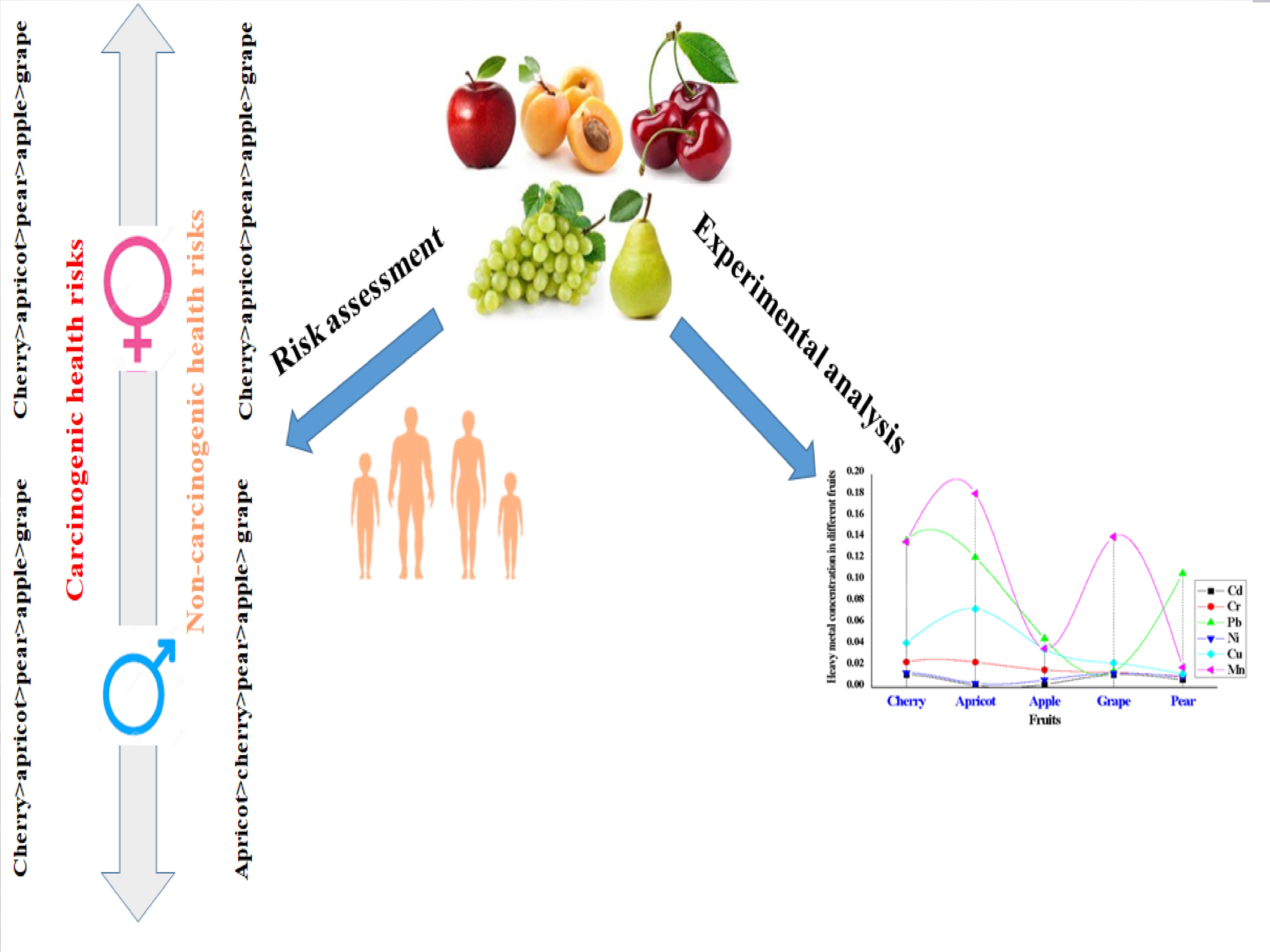
In Gilgit-Baltistan, urbanization, transportation, unplanned small-scale industry, kitchen waste, inorganic fertilizers, pesticides, insecticides, and weedicides contribute to agricultural field contamination, creating severe health risks. This study aims to determine the health risks caused by heavy metals found in various indigenous fresh fruits. To this end, we first assessed heavy metals concentration using well-established experimental procedures. In addition, a survey of male and female responde nts in the Gilgit District of Pakistan was conducted to determine the daily intake pattern. Finally, we used the Fuzzy-TOPSIS technique to calculate each indigenous fresh fruit's health risk and synergetic performance score. Results show the concentration order of heavy metals in indigenous fresh fruits, such as, Mn >Pb>Cu>Cr>Ni>Cd. For both males and females, the order of estimated daily intake (EDI) was Mn>Pb>Cu>Cr>Ni>Cd. Males estimated daily intake of Mn was highest in apricots, whereas females' EDI of Cd was lowest in apples. For females, the sequence was cherry>apricot>pear>apple>grape, while for men it was apricot>cherry>pear>apple>grape. Individual cancer risks varied from 1.513E-03 to 1.066E-01, with cherries posing the highest risk for males and grapes posing the lowest risk for females. Non-carcinogenic risks in fruits were cherry>apricot>pear>apple>grape for females and apricot>cherry>pear>apple>grape for males, whereas carcinogenic risks exhibited cherry>apricot>pear>apple>grape for both males and females. Although the estimated daily consumption of Mn and Pb exceeded the WHO standards, the heavy metals were below permissible levels. The Health Index (HI) revealed a ranking of cherry>apricot>pear>apple>grape for females and apricot>cherry>pear>apple>grape for males. According to the ranking, the cumulative cancer risk for both males and females followed the order of cherry>apricot>pear>apple>grape. The fuzzy-TOPSIS results were consistent with the experiment, and it was established that a regular intake could synergistically cause cancer. The study's findings can support policymakers and administrators in improving food safety standards to ensure fruit quality.
Total file downloads: 6